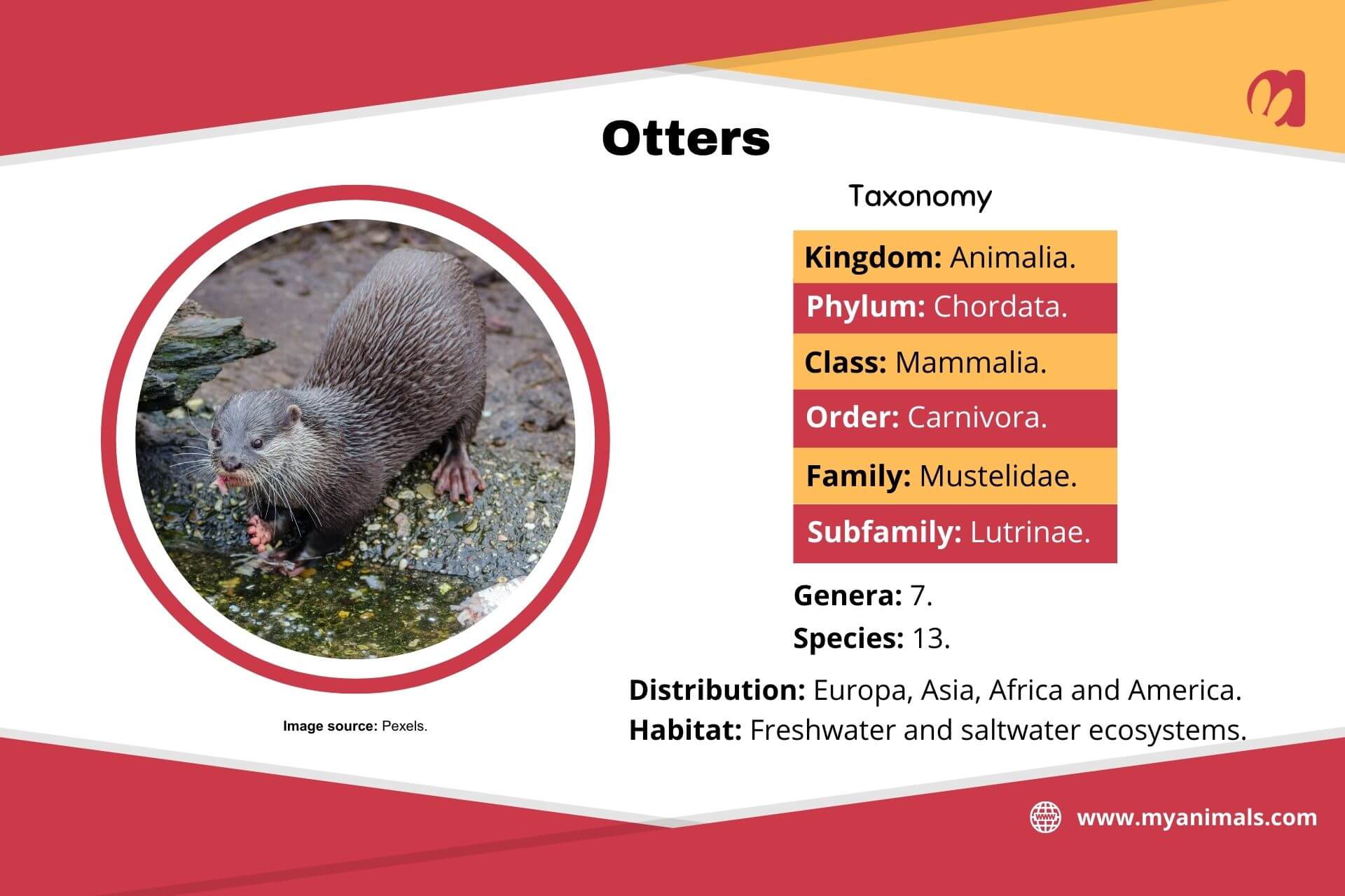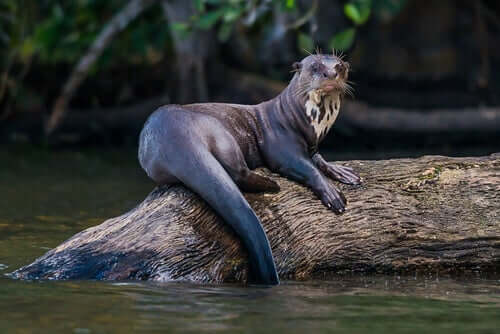The Characteristics, Behavior, and Habitat of the Otter

Today we want to tell you all about one of the most amazing and enthralling mammals species around: the otter. Otters are aquatic mammals that not only live in rivers, but in the ocean as well. They’re believed to be one of the most intelligent species on the planet, as they can even build their own tools.
The characteristics of the otter

Otters are a species that belongs to the mustelids, meaning they’re related to ferrets, badgers, and minks. Despite what many people believe, otters are not related to beavers. Beavers belong to the rodent family, and therefore have nothing to do with otters.
Therefore, otters are aquatic mammals with a large hydrodynamic and slightly flat body. They can measure from 24 to 34 inches long, approximately. This is without taking into account their tails, which can measure almost half the length of their bodies. Their legs are short and they have a membrane between their toes that helps them swim and dive.
As for its fur, the otter has a brown-colored back and a grayish belly. Its hair is impermeable, which allows it to maintain body heat while in the water. As for its life expectancy, the otter can live for up to between eight and fifteen years in the wild. However, in captivity, they can live for up to twice as long.
Despite popular belief, otters don’t feed on berries and plants. For the most part, they eat fish, and, for that reason, we can call them opportunistic carnivorous. However, some otter species eat frogs. And there are also species that live in tropical regions and dig around the bottom of rivers to find shrimp and crabs.
The habitat of the otter
Otters live in almost the entire globe – with the exception of Australia and Antarctica – and usually live on the banks of rivers or lakes. In general, they tend to prefer warm and freshwater areas. However, there are also some sea otter species.
Thanks to their impermeable fur and their multiple layers of fat, otters can withstand cold waters. They live in areas where water is fairly shallow. This is because, though they are aquatic, they spend many hours each day stretched out under the sun.
Normally, they build their nests in swampy areas, marshlands, and forests that are along the water. This allows them to hide very well and escape from predators. Just the same, it’s important to point out that otters don’t have many predators. Their biggest threat is humans who hunt them for their skin.
Despite being aquatic animals, they build their dens on land. Some dig into the dirt in order to make their burrows, while others build nests in the branches of rocky shores.
Except during the reproductive season, otters don’t live in burrows or in any permanent home. Rather, they define a territory that they live in and defend it, and they move about this territory freely.
We can find otter specimens in very diverse regions like Asia, Africa, tropical waters, etc. In North America, there’s also a type of sea otter that feeds on mollusks. Interestingly, there’s a type of giant otter than lives in South America. And while they appear in many different countries, the majority of them live on the shores of the Amazon River in Brazil.

Species of otters
There are 13 different otter species, although we can also take into account another species, the Maxwell’s otter, which is critically endangered of extinction. Below, we’ll tell you about the most well-known.
- The sea otter (Enhydra lutris) can be found in North America and along the Pacific Ocean. It has the roundest face among all of the otter species and it feeds on fish, which it hunts in groups.
- The European otter (Lutra lutra) lives in freshwater in different parts of Europe. It’s recognizable because the gray on its belly is more extensive than in other otter species, covering nearly half its body.
- The giant otter (Pteronura brasiliensis) lives in South America and its population is concentrated along the shores of the Amazon. It can come to weigh between 66 and 88 pounds and come to measure some 6 feet long.
- The clawless otter (Aonyx capensis) is a specimen that appears in Africa and is one of the smallest otter species. These mammals are very agile and feed on small crabs, frogs, and worms.
The behavior of the otter
Otters are docile animals that don’t tend to attack without prior warning. They are territorial and may fight with members of their own species. However, they usually get along just fine with other animal species.
They spend many hours of the day outside of the water on the shore, soaking up the sun. The time when they are most active is at night, as they take advantage of the daytime to stay in hiding.
Otters have the ability to use tools in order to find their food. In fact, humans have spotted otters using rocks to smash shells that they are unable to open with their own claws. There are very few animals that know how to use tools, a characteristic that is a sign of great intelligence.
Despite being a very docile animal that’s not afraid of humans, it’s best to observe them from a distance and not interfere with their habitats. Not all of the otter species are in danger of extinction, but they all fight for their survival. They may become stressed and are essential to the ecosystems where they live.
All cited sources were thoroughly reviewed by our team to ensure their quality, reliability, currency, and validity. The bibliography of this article was considered reliable and of academic or scientific accuracy.
- Carter, S. K., & Rosas, F. C. (1997). Biology and conservation of the giant otter Pteronura brasiliensis. Mammal Review, 27(1), 1-26.
- Erlinge, S. (1968). Territoriality of the otter Lutra lutra L. Oikos, 81-98.
- Prigioni, C., Balestrieri, A., & Remonti, L. (2007). Decline and recovery in otter Lutra lutra populations in Italy. Mammal Review, 37(1), 71-79.
- Siriwat, P., & Nijman, V. (2018). Illegal pet trade on social media as an emerging impediment to the conservation of Asian otters species. Journal of Asia-Pacific Biodiversity, 11(4), 469-475.
This text is provided for informational purposes only and does not replace consultation with a professional. If in doubt, consult your specialist.